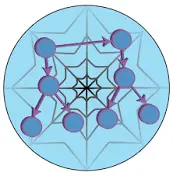Unveiling Evolutionary Histories:
Phylogenetic footprinting stands as a cornerstone technique in the realm of bioinformatics and genomics. By scrutinizing the non-coding regions of DNA across different species, researchers can discern conserved sequences, shedding light on crucial regulatory elements and evolutionary dynamics.
However, the efficacy of phylogenetic footprinting heavily relies on the tools employed for analysis. In this blog, we'll delve into the ultimate tools that empower scientists in unraveling the mysteries encoded within genomes.
TOOLS

MEME Suite
MEME (Multiple Em for Motif Elicitation) Suite remains a stalwart in motif discovery, including phylogenetic footprinting.
Its versatility allows for the identification of conserved motifs amidst non-coding DNA sequences.
By integrating evolutionary relationships among species, MEME aids in pinpointing regulatory elements crucial for gene expression across divergent organisms.

PhyloP and PhastCons
PhyloP and PhastCons, two tools developed by the Siepel lab, offer indispensable functionalities for phylogenetic footprinting.
PhyloP computes conservation scores at each nucleotide position based on evolutionary models, aiding in the identification of highly conserved regions.
Conversely, PhastCons employs a probabilistic framework to discern conserved elements across multiple species, providing a holistic view of evolutionary constraints.

Regulatory Sequence Analysis Tools (RSAT)
RSAT encompasses a suite of tools tailored for regulatory sequence analysis, catering to various aspects of phylogenetic footprinting.
From identifying transcription factor binding sites to elucidating cis-regulatory modules, RSAT equips researchers with the means to dissect regulatory networks across evolutionary distances.
Its user-friendly interface and extensive database make it an indispensable asset in genomic research.

MEME-ChIP
A specialized extension of the MEME Suite, MEME-ChIP, serves as a potent tool for motif discovery within ChIP-seq datasets.
By integrating ChIP-seq data with evolutionary conservation information, MEME-ChIP enables the identification of transcription factor binding motifs embedded within conserved non-coding regions.
This synergy between epigenomic data and evolutionary conservation enhances the accuracy of regulatory element prediction.

VISTA
Visualizing Transcriptional Regulatory Regions (VISTA) offers a comprehensive platform for comparative genomics and phylogenetic footprinting.
Its intuitive interface facilitates the alignment and visualization of genomic sequences across multiple species, highlighting evolutionarily conserved regions with unparalleled clarity.
VISTA's interactive features empower researchers to explore regulatory landscapes and infer functional implications from sequence conservation patterns.